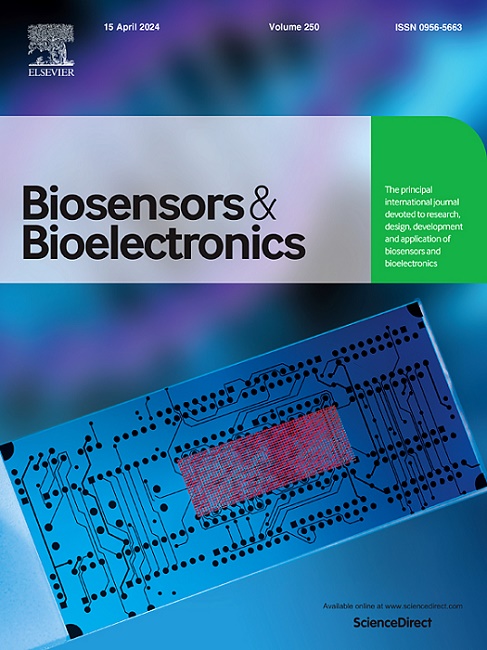Stable liquid crystal-infiltrated photonic crystal sensing film for facile detection of streptomycin
IF 10.7
1区 生物学
Q1 BIOPHYSICS
引用次数: 0
Abstract
Liquid crystal (LC) biosensors have attracted interest due to their simplicity and ability to visualize results. However, their inherent instability including the fluidity of LCs and the complexity of operation, limits their potential as reliable and user-friendly detection tools. To enhance their practical applicability, a stable and facile LC-infiltrated photonic crystal (LCP) sensing film is developed through optimization of film substrate preparation and investigation of the response mechanism. The reflection peak of the LCP film, which is modulated by changes in LC orientation within the film, can be recorded using a fiber-optic spectrometer or observed visually. Molecular dynamics simulations, integrated with experimental data, were employed to improve LC induction efficiency and increase signal strength. This approach inherently improves the stability and sensitivity of LC biosensors, expanding their potential for use in compact devices. A triple-helix molecular conformational switch is introduced to establish a versatile and specific detection platform. When streptomycin was chosen as a model analyte, the LCP film exhibited a linear range from 5 nM to 10 μM, with a detection limit of 0.40 nM and a relative standard deviation of 2.19%, indicating high precision and reliability. Its practical application was further confirmed with food samples, highlighting its potential for at-home testing of antibiotic residues.
求助全文
约1分钟内获得全文
求助全文
来源期刊

Biosensors and Bioelectronics
工程技术-电化学
CiteScore
20.80
自引率
7.10%
发文量
1006
审稿时长
29 days
期刊介绍:
Biosensors & Bioelectronics, along with its open access companion journal Biosensors & Bioelectronics: X, is the leading international publication in the field of biosensors and bioelectronics. It covers research, design, development, and application of biosensors, which are analytical devices incorporating biological materials with physicochemical transducers. These devices, including sensors, DNA chips, electronic noses, and lab-on-a-chip, produce digital signals proportional to specific analytes. Examples include immunosensors and enzyme-based biosensors, applied in various fields such as medicine, environmental monitoring, and food industry. The journal also focuses on molecular and supramolecular structures for enhancing device performance.
 求助内容:
求助内容: 应助结果提醒方式:
应助结果提醒方式:


